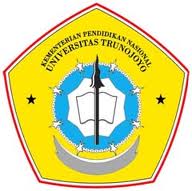Anda belum Log-in!
Silahkan Log in
Selamat Datang di Portal Digital Content Publisher
Jumat , 17 October 2025
Perpustakaan sebagai jantung pendidikan tinggi di Indonesia, harus mampu memberi kontribusi yang berarti bagi pelaksanaan proses belajar mengajar di perguruan tinggi.
di-posting oleh 140311100097 pada 2018-08-07 13:30:06 • 451 klik
TOKSISITAS ISOLAT DARI RHIZOSFER KOPI DAN KAKAO SERTA KERAPATAN KONIDIA Beauveria bassiana TERHADAP WERENG BATANG COKLAT (Nilaparvata lugens)
Toxicity of Isolates from Cocoa and Coffee Rhizosphere, and The Density of Beauveria bassiana Conidia on Brown Plant Hopper (Nilaparvata lugens)
disusun oleh AHMAD WIBOWO
| Subyek: | Hama dan Penyakit Tanaman Uji Toksisitas |
| Kata Kunci: | Nilaparvata lugens. Beauveria bassiana LC50 dan LT50. |
[ Anotasi Abstrak ]
Nilaparvata lugens merupakan hama utama yang sangat merugikan bagi tanaman padi. Pengendalian hama tersebut masih menggunakan pengendalian secara kimia. Pengendalian hama menggunakan agens hayati merupakan salah satu alternatif untuk mengurangi dampak negatif pengendalian secara kimia. Salah satu pengendalian menggunakan agens hayati adalah dengan cendawan entomopatogen Beauveria bassiana. Penelitian ini menggunakan analisis probit pada program SPSS 16.0. perlakuan yang diberikan pada nimfa N. lugens instar 5 yaitu kerapatan konidia 104 konidia/mL, 105 konidia/ mL, 106 Konidia/mL, 107 konidia/mL B. bassiana yang diisolasi dari rhizosfer kopi dan kakao. Isolasi B. bassiana menggunakan larva Tenebrio molitor. Kerapatan konidia 107 konidia/mL B. bassiana yang diisolasi dari rhizosfer kakao mampu menyebabkan mortalitas nimfa N. lugrns sebesar 67% pada 72 jam setelah aplikasi dan pada B. bassiana yang diisolasi dari rhizosfer kopi sebesar 53% pada 72 ja setelah aplikasi. Nilai LC50 pada isolat yang di isolasi pada rhizosfer kakao dan kopi masing-masing sebesar 105 konidia/mL dan 106 konidia/mL. Sedangkan nilai LT50 pada isolat yang diisolasi pada rhizosfer kakao dan kopi masing-masing sebesar 64,154 jam dan 77,056 jam. Pada kerapatan konidia 106 konidia/mL dan 107 konidia/mL B. bassiana yang diisolasi dari rhizosfer kakao tidak ada nimfa yang berhasil menjadi imago tetapi pada kerapatan konidia 104 konidia/mL dan 105 konidia/mL nimfa yang berhasil menjadi imago sebesar 3,3%, sedangkan pada isolat yang diisolasi dari rhizosfer kopi nimfa yang berhasil menjadi imago berkisar antara 3,3% - 10%.
Deskripsi Lain
Nilaparvata lugens is the primary pest which is very harmful for rice plants. The control of this pest still uses a chemical control. The control uses biological agents which becomes an alternative to reduce the impact of negative chemical control. One of the control from biological agents is using entomopathogenic fungus Beauveria bassiana. This study utilizes a probit analysis on SPSS 16.0 program. The treatments given to nymph N. Lugens instug 5 are the density of conidia with 104 conidia / mL, 105 conidia / mL, 106 conidia / mL, 107 conidia / mL B. bassiana which is isolated from coffee and cocoa rhizosphere. The isolation of B. bassiana is using Tenebrio molitor larvae. The density of conidia 107 conidia / mL B. bassiana isolated from the cocoa rhizosphere can cause N. lugens nymph mortality by 67% at 72 hours after application, and in B. bassiana isolated from the coffee rhizosphere by 53% at 72 hours after application. The LC50 value of isolates which is isolated in the cocoa rhizosphere is 105 conidia / mL, whereas in coffee is 106 conidia / mL. On the other hand, the LT50 value of isolates that is isolated in the cocoa rhizosphere is 64,154 hours and in the coffee is 77,056 hours. In the density of conidia 106 conidia / mL and 107 conidia / mL B. Bassiana which are isolated from the cocoa rhizosphere, there is no nymphs succeed to be imago, but at conidia densities of 104 conidia / mL and 105 conidia / mL, the nymphs succeed to be imago with an amount of 3,3%; whereas in the isolates which is isolated from the coffee rhizosphere, the nymphs succeed to be imago ranged from 3,3% - 10%.
| Kontributor | : Dr. Ir. Gita Pawana, M.Si ; Dr. Agr. Eko Setiawan, SP, M.Si |
| Tanggal tercipta | : 2018-08-06 |
| Jenis(Tipe) | : Text |
| Bentuk(Format) | |
| Bahasa | : Indonesia |
| Pengenal(Identifier) | : TRUNOJOYO-Tugas Akhir-13775 |
| No Koleksi | : 140311100097 |
Ketentuan (Rights) :
2018
 Download File Penyerta (khusus anggota terdaftar)
Download File Penyerta (khusus anggota terdaftar) 1. TRUNOJOYO-Tugas Akhir-13775-140311100097_Cover.pdf - 1269 KB
1. TRUNOJOYO-Tugas Akhir-13775-140311100097_Cover.pdf - 1269 KB 2. TRUNOJOYO-Tugas Akhir-13775-140311100097_Abstract.pdf - 12 KB
2. TRUNOJOYO-Tugas Akhir-13775-140311100097_Abstract.pdf - 12 KB 3. TRUNOJOYO-Tugas Akhir-13775-140311100097_Chapter1.pdf - 200 KB
3. TRUNOJOYO-Tugas Akhir-13775-140311100097_Chapter1.pdf - 200 KB 4. TRUNOJOYO-Tugas Akhir-13775-140311100097_Chapter2.pdf - 232 KB
4. TRUNOJOYO-Tugas Akhir-13775-140311100097_Chapter2.pdf - 232 KB 5. TRUNOJOYO-Tugas Akhir-13775-140311100097_Chapter3.pdf - 166 KB
5. TRUNOJOYO-Tugas Akhir-13775-140311100097_Chapter3.pdf - 166 KB 6. TRUNOJOYO-Tugas Akhir-13775-140311100097_Chapter4.pdf - 214 KB
6. TRUNOJOYO-Tugas Akhir-13775-140311100097_Chapter4.pdf - 214 KB 7. TRUNOJOYO-Tugas Akhir-13775-140311100097_Conclusion.pdf - 83 KB
7. TRUNOJOYO-Tugas Akhir-13775-140311100097_Conclusion.pdf - 83 KB 8. TRUNOJOYO-Tugas Akhir-13775-140311100097_Reference.pdf - 157 KB
8. TRUNOJOYO-Tugas Akhir-13775-140311100097_Reference.pdf - 157 KB 9. TRUNOJOYO-Tugas Akhir-13775-140311100097_Appendices.pdf - 1463 KB
9. TRUNOJOYO-Tugas Akhir-13775-140311100097_Appendices.pdf - 1463 KB Dokumen sejenis...
Dokumen sejenis...Tidak ada !
 Dokumen yang bertautan...
Dokumen yang bertautan...- Uji Efektifitas Trichoderma sp. Dari Berbagai Asal Isolat Terhadap Patogen Phytophthora palmivora Penyebab Busuk Buah Kakao.
- TOKSISITAS ISOLAT DARI RHIZOSFER KOPI DAN KAKAO SERTA KERAPATAN KONIDIA Beauveria bassiana TERHADAP WERENG BATANG COKLAT (Nilaparvata lugens)
- UJI ANTAGONIS PSEUDOMONAD PENDARFLUOR PADA PATOGEN HAWAR DAUN PADI (Rhizoctonia solani Kuhn.) SECARA IN VITRO
- Uji Patogenitas Cendawan Entomopatogen Lecanicillium lecanii dari Tiga Media Biakan Pada Wereng Batang Coklat (Nilaparvata lugens Stal.)
- NEMATODA ENTOMOPATOGEN (NEP) DI KEBUN KOPI DAN KAKAO WILAYAH JOMBANG
 Kembali ke Daftar
Kembali ke Daftar 